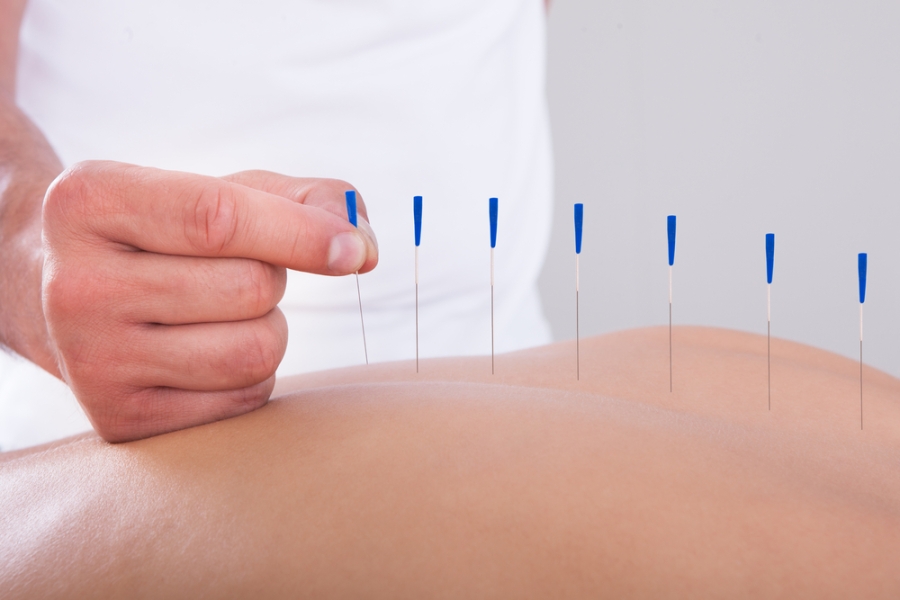Step into the ancient world of acupuncture, where mystical energy flows through the body like rivers, guiding healers toward balance and harmony. In this article, we will embark on a journey to explore the fascinating realm of acupuncture – a healing art that has stood the test of time, offering a unique perspective on health and wellness. Join us as we uncover the mysteries behind this age-old practice and discover the wonders that lie within.

The Ancient Origins of Acupuncture
Acupuncture, a key component of traditional Chinese medicine, has been practiced for over 2,500 years. can be traced back to the Neolithic Age, where stone needles were used to treat a variety of ailments. Over time, these crude tools evolved into the fine needles used in modern acupuncture practice.
According to legend, acupuncture was discovered when Chinese warriors were found to have relieved pain by being struck with arrows in specific points on their bodies. This discovery led to the development of a systematic approach to healing through the manipulation of these points, known as acupuncture points.
Through the centuries, acupuncture has grown in popularity and spread to other cultures around the world. Today, it is considered a complementary therapy for a wide range of conditions, from chronic pain to infertility. The ancient wisdom and philosophy behind acupuncture continues to fascinate and inspire practitioners and patients alike.
Understanding the Science Behind Acupuncture
Acupuncture is a traditional Chinese medicine practice that involves inserting thin needles into specific points on the body to promote healing and relieve pain. This ancient technique has been used for centuries to treat a variety of ailments and is gaining popularity in Western medicine.
One of the key principles behind acupuncture is the concept of Qi (pronounced “chee”), which is believed to be the vital energy that flows through the body. By stimulating specific acupuncture points, practitioners aim to balance the flow of Qi and restore harmony to the body.
Research has shown that acupuncture can be effective in treating conditions such as chronic pain, anxiety, and insomnia. The needles used in acupuncture are very thin and are inserted at varying depths, depending on the condition being treated.
During an acupuncture session, patients may experience sensations such as tingling, warmth, or a dull ache at the site of the needle insertion. These sensations are often a sign that the Qi is being stimulated and the body’s natural healing processes are being activated.
Exploring Different Acupuncture Techniques
Acupuncture is an ancient form of traditional Chinese medicine that has been practiced for thousands of years. It involves inserting thin needles into specific points on the body to help alleviate pain and promote overall health and well-being. There are a variety of different acupuncture techniques that practitioners use to achieve these goals, each with its own unique approach and benefits.
One popular acupuncture technique is called Electroacupuncture, which involves sending a small electrical current through the needles to stimulate the acupuncture points. This can help to increase blood flow, reduce inflammation, and relieve muscle tension. Another technique is Auricular Acupuncture, which focuses on the ear and is often used to treat addictions, stress, and emotional issues.
Some practitioners may also use Japanese Acupuncture techniques, which tend to be more gentle and subtle compared to traditional Chinese acupuncture. This can involve different needle sizes and insertion depths, as well as the use of moxibustion or herbal remedies alongside acupuncture treatments. Overall, exploring the world of acupuncture and its various techniques can offer a personalized and holistic approach to healing and wellness.
Tips for Finding a Qualified Acupuncturist
When it comes to exploring the world of acupuncture, finding a qualified practitioner is essential for a safe and effective experience. Here are some tips to help you find the right acupuncturist:
- Check the practitioner’s credentials: Look for an acupuncturist who is licensed and certified by a reputable organization.
- Ask for recommendations: Reach out to friends, family, or healthcare providers for referrals to trusted acupuncturists.
- Research their experience: Find out how long the acupuncturist has been practicing and if they have experience treating your specific condition.
- Trust your instincts: During your initial consultation, pay attention to how you feel around the practitioner and if you feel comfortable with them.
Remember, finding a qualified acupuncturist is crucial for a positive acupuncture experience. Take your time to research and ask questions to ensure you are in good hands.
As we conclude our journey through the fascinating world of acupuncture, we hope that you have gained a newfound appreciation for this ancient healing practice. From its origins in traditional Chinese medicine to its popularity in modern Western society, acupuncture continues to intrigue and inspire us with its ability to promote healing and balance within the body. Whether you are a seasoned practitioner or a curious newcomer, we encourage you to explore the many benefits of acupuncture for yourself. So go forth, with an open mind and a willingness to embrace the inner harmony that awaits you in the world of acupuncture. The possibilities are endless, and the journey is yours to discover.
